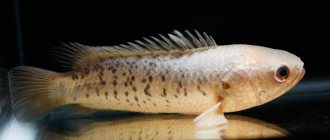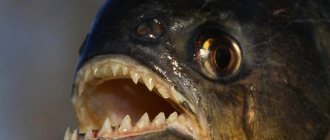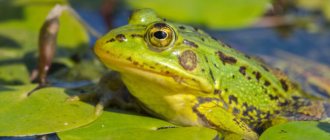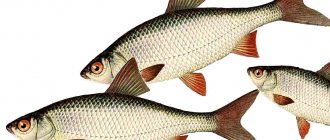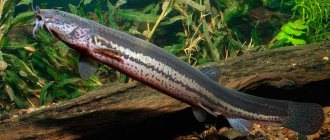Home page Wildlife Animal world
31 956 4.54 2
Interesting fact: despite the fact that absolutely all clown fish are born males, if necessary, each of them is able to change their gender. This does not always happen, but only when the female dies: since females are much smaller than males, this is the only opportunity to reproduce.
Relations in the flock are built on a hierarchical principle - a pair of the largest individuals is at the head, while the rest restrain their growth so as not to become a victim of the dominant male. But as soon as he dies or transforms into a female, all the fish in the school immediately begin to grow in order to take his place. And this growth stops only when the “contender” is found.
Bright orange to deep purple
Clownfish differ in appearance. Their colors may include orange, yellow, purple, blue, red and black. But almost always there are wide stripes of snow-white color on the body of clown fish.
Photo: David Clode
The most famous species is Amphiprion ocellaris, which has a bright orange body and three broad white stripes outlined by thin black lines. This fish has a rounded tail and 11 spines on its dorsal fin. It is almost indistinguishable from another orange clownfish, Amphiprion percula. The only difference is that the black stripes outlining the white stripes are thicker than those of ocellaris.
All clown fish grow on average to 11 cm in length, their average body weight is 200 grams.
Where does the clown loach live?
Photo: Botia clown in the water
The historical homeland of the fish is considered to be the territory of Southeast Asia.
Geographical regions of habitat of the macracanth fish:
- Indonesia;
- Sumatra;
- Borneo Islands;
In natural conditions they are inhabitants of rivers of various sizes. They lead a predominantly sedentary lifestyle. During the spawning period they usually migrate, but when it ends they return to their usual habitats. Fish can inhabit rivers both with standing water and where there is a current. During the monsoon period, they move to flat areas that are flooded by rivers. It can inhabit very clean water bodies, and at the same time those that are polluted.
Fish adapt quite quickly to new conditions, including in an aquarium. They do not require special, labor-intensive care. To create comfortable conditions, they will need a spacious aquarium, taking into account the fact that fish grow up to 20-35 centimeters. It is better to count on an aquarium for an average of 3-6 individuals, since the clown botia likes to live as part of a group.
The volume of water per individual is 80-100 liters. The main criterion is the absence of nitrates and additional impurities in the water. The presence of nitrates can lead to the death of brightly colored fish. One of the mandatory criteria is aeration and filtration, water temperature 25-28 degrees. It is best to cover the aquarium bottom with coarse sand or a minimum fraction of gravel, since the clown botia likes to move the bottom with its mustache.
There are also certain lighting requirements. It is best if it is diffused and somewhat muted. When choosing vegetation, it is better to choose species with tough foliage so that they cannot be eaten by them. These can be various types of aquatic ferns, cryptocorynes, echinodorus, and anibois. It is advisable to cover the aquarium with a lid so that its inhabitants cannot jump out of it. The swim bladder of the clown loach is divided into two parts by a kind of septum. The anterior part is enclosed in a bone capsule, the posterior part is practically absent.
Now you know everything about the contents and compatibility of the clown battle. Let's see what you need to feed the fish.
Coral reef lovers
Clownfish live in large, stable populations in the shallow waters of the Red Sea and Indian Ocean, as well as in the western Pacific Ocean. They also prefer the warm waters of coral reefs. There are especially many of them off the coast of Southeast Asia and Australia. In winter, clownfish migrate to deep water where they can warm up.
They are not found only in the Atlantic, Caribbean or Mediterranean Seas.
Mutually beneficial cooperation
Both representatives of the animal world, clown fish and sea anemone, benefit from such a neighborhood. If the unconditional fact is that sea anemones protect their little partners from various predators, then cnidarians need ocellaris because, despite their predatory nature, in reality they are quite helpless.
These inhabitants of the deep sea are completely devoid of a mineral skeleton and, once established on solid sea soil, never leave it again, and therefore are absolutely unable to take care of themselves - small fish do this for them: they clean the cnidarians from debris and dirt, ventilate the water among tentacles, eat up undigested food remains.
Sea anemones feed only on those creatures that are either accidentally brought by the current, or that will swim past, or that are lured by amphiprions with their bright colors (for example, large predatory fish, in pursuit of small, bright, beautiful fish, often fall into a trap). By luring prey to the cnidarian, clown fish feed themselves.
First, sea anemones use their stinging cells to kill and paralyze their prey. What the sea anemones could not digest is eaten by the three-ribbon ocellaris. Since these fish do not like to move away from their place of residence, their diet also includes various types of plankton, which the current and small algae bring to them.
Clown fish are quite capable of living without sea anemones; if there are not enough stinging fish for all members of the school, they settle among underwater rocks or in the grottoes of coral reefs.
Clownfish form a symbiosis with sea anemones
Anemones, as clownfish are also called, earn this name because they form a symbiotic relationship with sea anemones. These creatures attach themselves to the ocean floor and use their tentacles to collect food. Sea anemones come in many varieties, but not all of them are clownfish-friendly. There are more than 1,000 species of anemone, and only ten of them can coexist with clownfish. Even so, clownfish prefer to form symbiotic relationships with only three species of anemone: Heteractis magnifica, Stichodactyla gigantia and Stichodactyla mertensii.
Photo: David Clode
Sea anemones secrete toxins from their tentacles, but clownfish avoid them by performing an intricate dance with the anemone. When the clownfish gently touches the anemone's tentacles, it acclimatizes, forming a layer of mucus that scientists believe gives it immunity to the anemone's deadly stings. Once established, the clownfish reaps the maximum benefit from this relationship: increased protection and safer access to food.
When a clownfish swims onto the reef, it attracts a larger individual and lures it back to the anemone. The anemone stings its prey and eats it, leaving the remains for the clownfish.
Interesting facts about the life of clowns. The secret of “friendship” with sea anemone
It will not surprise anyone that a small creature has to survive in a big world. Some use weapons in the form of poison, thorns or stinging cells, others use mimicry, and others, like the Ocellaris amphiprions, show amazing intelligence and break records in originality competitions.
Sea anemones of different types.
The fish spend the main part of their life inside a dangerous sea animal, an anemone (or anemone), armed with stinging cells. It should be feared not only by all kinds of inhabitants of the ocean, but also by humans, but clowns are not afraid. On the contrary, they calmly live, feed and even sleep in the thickets of anemones, and if necessary, they certainly protect their living house from uninvited guests, even if they are comparable in size to the clown itself or larger.
Mimicry is the similarity in appearance and smell of some creatures of the animal and plant world. Example: the king milk snake, which bears a striking resemblance to the venomous adder.
Their stern belligerence is truly admirable: having noticed the enemy, the amphiprion rushes forward, making hissing and grumbling sounds and can even bite its enemy, remaining confident in its victory, since at any moment the “caring” tentacles of its native sea anemone will cover and save it. In nature, this phenomenon is called symbiosis - in other words, mutually beneficial cohabitation. The anemone is protected not only by its stinging cells, but also by the patrol of its orange neighbor, which, by the way, also delivers food to it on its scales and fins, which is plankton. Without the clownfish, the sea anemone could feed exclusively on what falls into its mouth with the flow of water.
No predator will touch the clowns hiding in the sea anemone!
In turn, the clown also receives a pleasant bonus for his dedication: protection from natural enemies. Any fish that has once encountered a threat posed by an anemone or an amphiprion will henceforth avoid this beautiful but dangerous couple. Why is Nemo himself, along with his father, and all the clown fish in the world not afraid of the sea anemone? Scientists are still formulating the answer to this question, but, alas, there is no clear opinion yet; it is believed that the skin of ocelaris produces thick mucus that blocks and does not allow the action of stinging cells to pass through.
Clownfish are hermaphrodites from birth.
They have both male and female reproductive organs. Male organs develop faster, which is why most clownfish become and remain male. However, they can become female if necessary.
Photo: Adrian Jakob
Schools of clownfish have a strict hierarchy, with the most aggressive female at the top. The second largest fish plays the role of the dominant male, and the rest become smaller males. When the dominant female dies, the dominant male transforms into a female. Two males can also become mating partners; in this case, the larger individual becomes the female.
Interesting Facts
So, what is interesting about the clown fish? Quite a tough question when it comes to a creature with such a remarkable name. Something must be hidden under such an intricate wording for the name of a fish!
What facts can surprise an ignorant person if he understands the issue?
So, interesting facts that not everyone knows:
- hermaphrodites from birth . Initially, the fish is born as a male, but in later life the individual can change sex and become a female.
- Clownfish live in pairs rather than in schools. Particularly large clusters of pairs are also found, but they are well adapted to separate existence. Moreover, they have one couple for life - the so-called “monogamous”, like swans and lovebirds.
- The couple always has a separate “home” . Usually this is sea anemone. The accumulation of sea anemones can cause the accumulation of many pairs of fish in one or another section of the bottom. They actively protect their “place of residence” from enemies and strangers.
- The death of a female is difficult for a male to experience and entails a change of sex . This is necessary to ensure the possibility of procreation even if one female is lost. When sex changes, a change in size also occurs - sexual dimorphism is designed so that the lady in a pair is always significantly (at least one and a half times) larger in size.
- Matriarchy reigns among clown fish , so the position of the male is always quite unfavorable. Females are observed to show courage, zeal to defend their territory and attack. Males, on the other hand, are typical “family men,” if not entirely part of the interior. It is not surprising that after the loss of a protector they strive to become similar.
- They are not capable of reproducing alone under any circumstances . Even though nature designed them as hermaphrodites, it is impossible to perform the functions of both sexes in one organism at the same time.
- Their lifespan is quite long for such a small fish - up to 10 years , and in aquarium conditions twice, or even two and a half times longer.
- They exist on sea anemones , with which they have mutual benefit. These poisonous corals protect them from predatory fish and other oceanic creatures, and the fish are bait for these predators - the sea anemone eats those who “bite” on this bait. Thus, we can say that the coral is engaged in underwater fishing without a fishing rod, and the clown here is nothing more than a worm on a hook.
- Oddly enough, the poison of sea anemone corals also stings the clowns themselves . They do not have any innate immunity to it. All their resistance is due to the body’s ability to adapt to the prevailing conditions.
- The fish’s “acquaintance” with home begins with the clown allowing itself to be stung. Having carried out the so-called “analysis” of the poison, the individual begins to rub against the coral, “getting used” to it. Over time, immunity appears, thanks to which the fish’s housing does not cause any harm.
- They feed on algae and plankton . The most standard food for inhabitants of near-bottom areas of the ocean. However, unlike many who eat the same thing for breakfast, they live much longer. This is due to the tricks described above.
- There is also a “delicacy” in the “diet”. In gratitude for shelter and protection, clowns clean sea anemones , biting off their dead parts, sweeping away sand, all kinds of growths, and fallen algae. Also, their swimming around the coral tentacles leads to filtration and improved water flow, which, again, is beneficial for their immediate residence.
Male clownfish are devoted fathers
They not only prepare nests for eggs, but also protect future offspring and clean the nesting site. After 6-8 days the larvae hatch completely transparent. After spending about 10 days drifting, they settle on the bottom of the coral reef before beginning their search for the symbiotic anemone. During this time, they acquire the coloring characteristic of adults.
Thanks to the protection provided to the young by their host anemones, they have virtually no exposure to predators. The exception is when they have to run out for food; at this time they are hunted mainly by larger and more aggressive fish.
Reproduction
These fish form small family groups in which one female lives with several males, and is the largest and oldest fish in the family. It is interesting that it can spawn until it dies (in nature, amphiphrions live about ten years, in an aquarium - twice as long). The female prefers to do this during the full moon, not far from her mate, and if he is not there, then in a grotto or under a rock.
An interesting fact is that the fish do not throw their eggs to the mercy of fate: the males guard the clutch throughout the entire maturation period (it lasts from six to ten days).
A week later, fry emerge from the eggs, rise upward to places where plankton accumulates, where they feed, grow (many cubs die during this period), and when they mature, they go in search of sea anemones and join the flock.
Natural enemies of the clown bot
Photo: Botia clown in the water
Under natural conditions, fish have enemies who are not averse to eating bright, colored fish. These include various types of predators that are larger in size than clown bots. They are also often hunted by aquatic birds. However, fish have a fairly significant defense mechanism - sharp spines. When danger appears, fish release spines that can dangerously injure a predator. Cases have been described in which birds died from perforation of the stomach when pricked by sharp fish spines.
Fish are distinguished by a fairly strong and stable organism, provided they are properly maintained and have a complete, balanced diet. However, there are a number of diseases that can cause the death of fish.
Diseases of the clown bot:
- fungal diseases;
- helminth damage;
- bacterial infections;
- ichthyophthyriosis.
Signs of the most common pathology, ichthyophthyriosis, are the appearance on the surface of the body of a white, grain-like rash, reminiscent of semolina. The fish begin to itch on pebbles, soil and various relief hills. They are lethargic and lacking initiative.
If you do not pay attention to the symptoms and do not provide assistance to these inhabitants of the aquarium, they will most likely die. Treatment consists of using the hyperthermia method - gradually raising the temperature of the water in the aquarium to 30 degrees. During the treatment period, it is necessary to change the water more often and carry out aeration.
History of becoming a pet
The story of how the orange Amphiprion or Amphiprion Ocellaris got into the aquarium is quite simple. It originates in the 20th century - an era marked by the heyday of the world's mass aquarium hobby. In 1905, in New York, the American Zoological Station announced its new project, breeding exotic marine fish in an aquarium, after which the popularity of the orange amphiprion and several other species of fish quickly gained momentum and over the next five years increased to the skies.
Nowadays, the handsome clown is often found in Russian homes, still pleasing the eye with his colors and captivating with his charm. In addition, the owner of a home Nemo can boast not only of the beauty of his aquarium, but also of valuable knowledge, which, if presented correctly, represents a fascinating story about who these clown fish are and why they have been of genuine interest to the whole world for many years.
In Russia, orange amphiprion has been especially popular over the last 10 - 15 years. In America, about 50 years ago, he received the title of the most commonly acquired aquarium fish.
Homeland of the orange amphiprion
The homeland of amphiprions is the Pacific Ocean, or more precisely, the reefs of the Pacific Ocean. They later appeared in the Indian Ocean and are now found throughout the waters from East Africa to French Polynesia and from Japan to Eastern Australia. They choose areas densely overgrown with reefs and inhabited by sea animones. Thanks to the knowledge of modern specialists, the habitat of these fish has expanded to incredible proportions. Now clowns can live comfortably in any city in any country in the aquarium of any interested person.
The mystery of the name "clown"
Why are they called that? This question, of course, sounded from your lips when you first heard the name of this fish. It's time to figure it out. In fact, the secret is quite simple: appearance. The orange amphiprion has a flat body of a bright shade, decorated with white stripes. When moving, the fish makes swaying, twitching movements, as if it is nervous. In the eyes of the observer it looks funny, hence the name - cheerful and playful.



